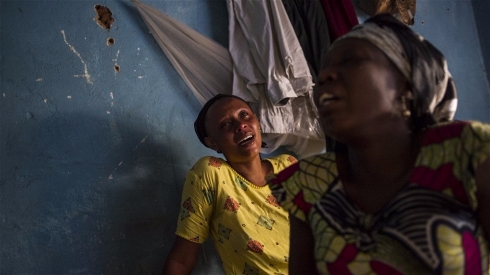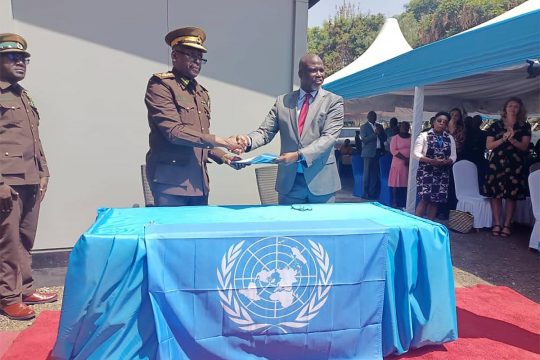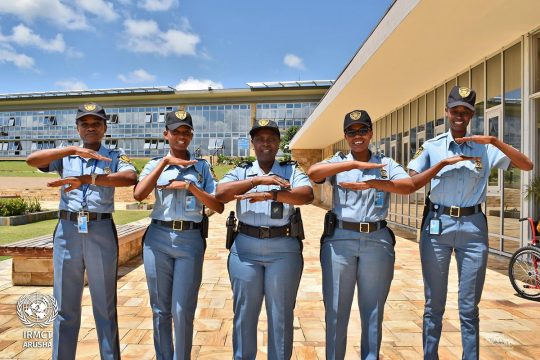At some stage, both sides in Burundi’s increasingly bloody political crisis are likely to be sitting across the table from one another in Arusha, Tanzania, looking to agree a political settlement.
Arusha, a laidback cosmopolitan city in northern Tanzania, has been the traditional venue for negotiating some of East Africa’s most intractable conflicts. It was where the Burundian government and the opposition CNARED were supposed to be heading last week for talks mediated by the African Union and the East African Community, until the government pulled out its representatives on the grounds that they couldn’t meet with “criminals” and “terrorists”.
See: Briefing: What next for the Burundi peace process?
Such contretemps are nothing new. After all the purpose of mediation is to put together people who don’t like each other, sometimes with murderous intensity. The Arusha Accords, aimed at resolving Rwanda’s civil war, took a year to hash out: the Arusha Peace and Reconciliation Agreement for Burundi (the document CNARED accuses the current government of trashing) took two years.
In the case of South Sudan, where a peace agreement was signed in Arusha last year and then promptly torn up by both sides, who knows?
Why Arusha?
It’s ever so slightly schizophrenic. It draws legions of tourists visiting the Serengeti national park, Ngorongoro conservation area, and Mount Kilimanjaro. But alongside the backpackers in sandals and bush camouflage – though rarely literally – are the men and women in power suits representing the other face of Arusha, that of a regional diplomatic hub.
It’s the headquarters of the EAC, hosts the African Court on Human and Peoples' Rights, the UN’s Mechanism for International Criminal Tribunals, and until two years ago, was home to the International Criminal Tribunal for Rwanda, trying those implicated in the 1994 genocide.
Arusha is bucolic enough to avoid distractions, but with the infrastructure necessary for high-level summitry – an East African Sharm el-Sheikh.
Why Tanzania?
“Tanzania is often perceived as a relatively neutral zone, a relatively positive force in the region,” explained Yolande Bouka of the Institute for Security Studies. Wrapped up in that perception is the still towering figure of Julius Nyerere, the country’s first president.
The guiding principle of his rule – that of independence and African Socialism - was enshrined in the Arusha Declaration, which led to a long dalliance with Scandinavian social democrats.
But it was his role in African liberation – particularly in southern Africa – for which he is rightly lionized. That also led to a partnership with Nelson Mandela over Burundi that was key to ending the 12-year civil war, in which Mandela domestically took a unilateral decision to send South African troops to protect returning political leaders.
What was the Burundi agreement?
Its aim was to end the conflict and cycles of massacres, including genocide, dating back to Burundi’s independence in 1962. Central to the agreement was trust. In broad terms, what was required was for the Tutsi minority to give up the army they dominated as a guarantee of their physical survival, and for the Hutu majority to see the democratic process as a way to win representation without resorting to arms.
According to Paul Nantulya of the Pentagon’s Africa Center for Strategic Studies, the mediation “sought to balance two extremely complex questions. The first was how to guarantee full political participation by the minority Tutsi population even when its prospects for winning competitive elections would remain slim in the foreseeable future? The second was how to alleviate the deep mistrust of the Hutu majority in the armed forces?”
Resolving that conundrum rested on a power-sharing formula based on minority over-representation and coalition-building; protocols providing for the equitable participation of all parties in the three branches of government and all national institutions, including state-owned corporations; constitutional checks to discourage the concentration of power by a single party or group of aligned parties; and the building of a unified military.
In Burundi’s current political crisis, the opposition’s central case is that President Pierre Nkurunziza’s ruling CNDD-FDD party is expanding its control over all political and military institutions – in contravention of the Arusha Accords. The CNDD-FDD, slow to put down its guns, were not signatories to Arusha. They argue they are therefore not bound by the deal, which they dismiss as outdated. They claim the Global Ceasefire Agreement, which CNDD-FDD signed in 2003, supersedes Arusha.
Bouka, of the ISS, sees that position as something of a canard, as the GCA flowed from the Arusha agreement, and can’t be viewed as independent from its provisions.
“Arusha remains a potent, yet increasingly controversial symbol of the possibilities of regional diplomacy,” an African diplomat based in Addis Ababa told IRIN. His concern is whether the region now has the leverage to get Nkurunziza to the negotiating table and avoid an acceleration of violence in Burundi. “The risk is if we’re seen as fickle, without the muscle to sustain and follow through.”
The case of Rwanda
Before the Rwanda genocide in 1994, there were the Arusha Accords. The UN-sponsored agreement was between the Rwandan government and the Rwandan Patriotic Front rebels. The RPF were the sons of mainly Tutsi exiles in Uganda, who returned in 1990 to wage war against a largely Hutu dominated government – all oversimplifications acknowledged, the mirror opposite of Burundi.
The accords provisions included a power-sharing formula to also incorporate the civilian opposition to President Juvenal Habyarimana. Complicating the Arusha negotiations were the various splits among the political parties, and Habyarimana’s disregard for the “pieces of paper”.
The accords, finally agreed in 1993, were never implemented. In April 1994 the plane carrying Habyarimana and Burundian President Cyprien Ntaryamira from Dar es Salaam to Kigali was shot down – nobody can quite agree by whom – triggering the beginning of the genocide that targeted Tutsis and liberal Hutus. The RPF’s subsequent military victory ended the seeming political necessity of the agreement.
A better peace?
The nature of peace deals is that they usually end with a power-sharing agreement between the men with the guns, which tends to ignore issues of transitional justice and accountability. The usual steps are a ceasefire, UN-supervised elections, and then international attention shifts elsewhere. There is rarely any explicit attempt to transform the lives of the civilians that bore the brunt of the conflict, or mechanisms to effectively monitor the peace in a sovereign country.
“We are very aware that we reward the people that caused the death and violence, but how do you not bring them to the table?,” noted Bouka.
An elite-based peace, derived from an agreement with men used to impunity for their actions, can be fragile. “In some cases, we see the early warnings [of trouble ahead], but because we focus so much on current stability, we let things slide,” said Bouka.
She added that there are more than enough examples in Burundi of the closing of political space and growing intolerance by the CNDD-FDD for regional diplomats not to have intervened far earlier.





